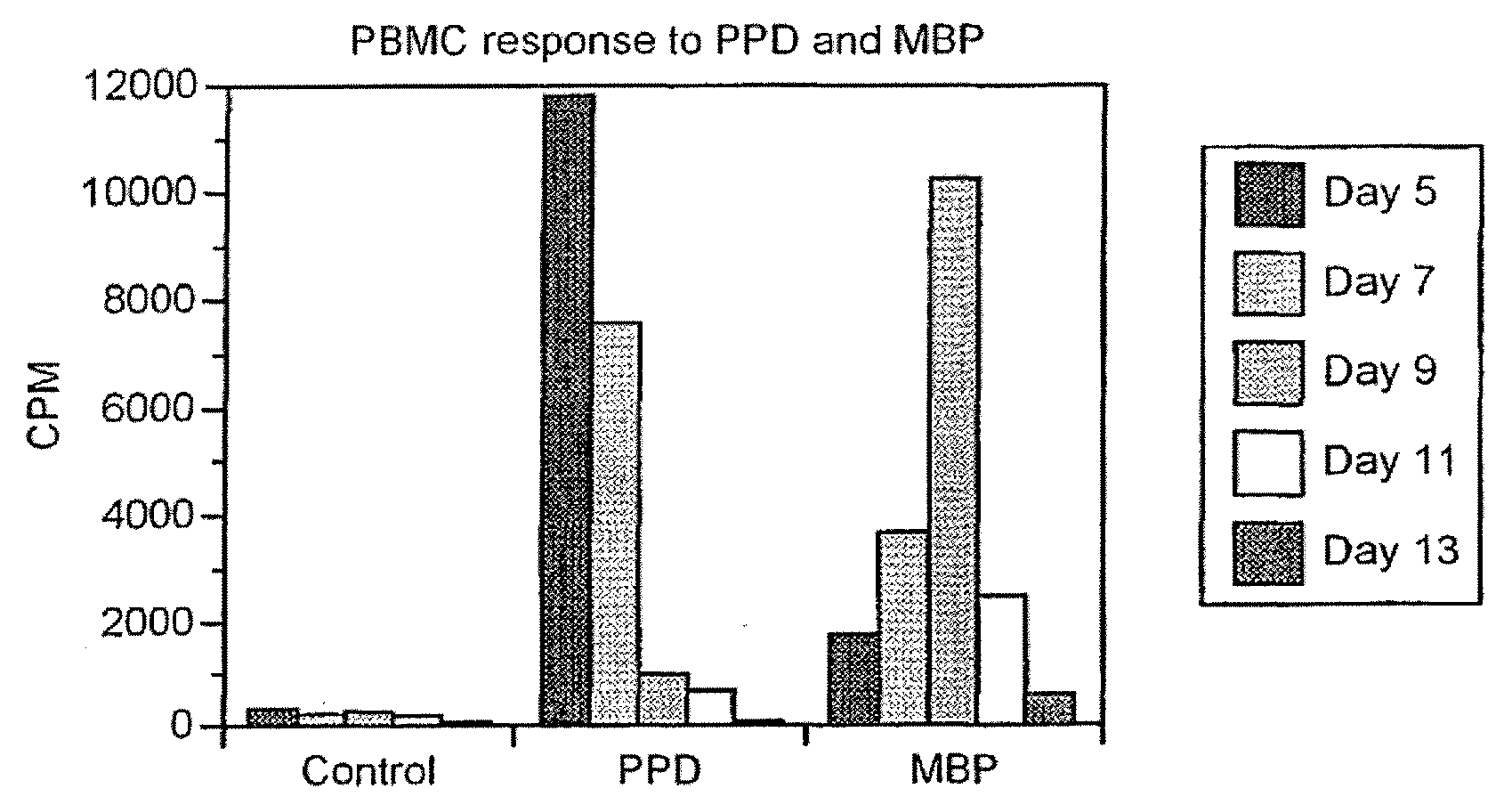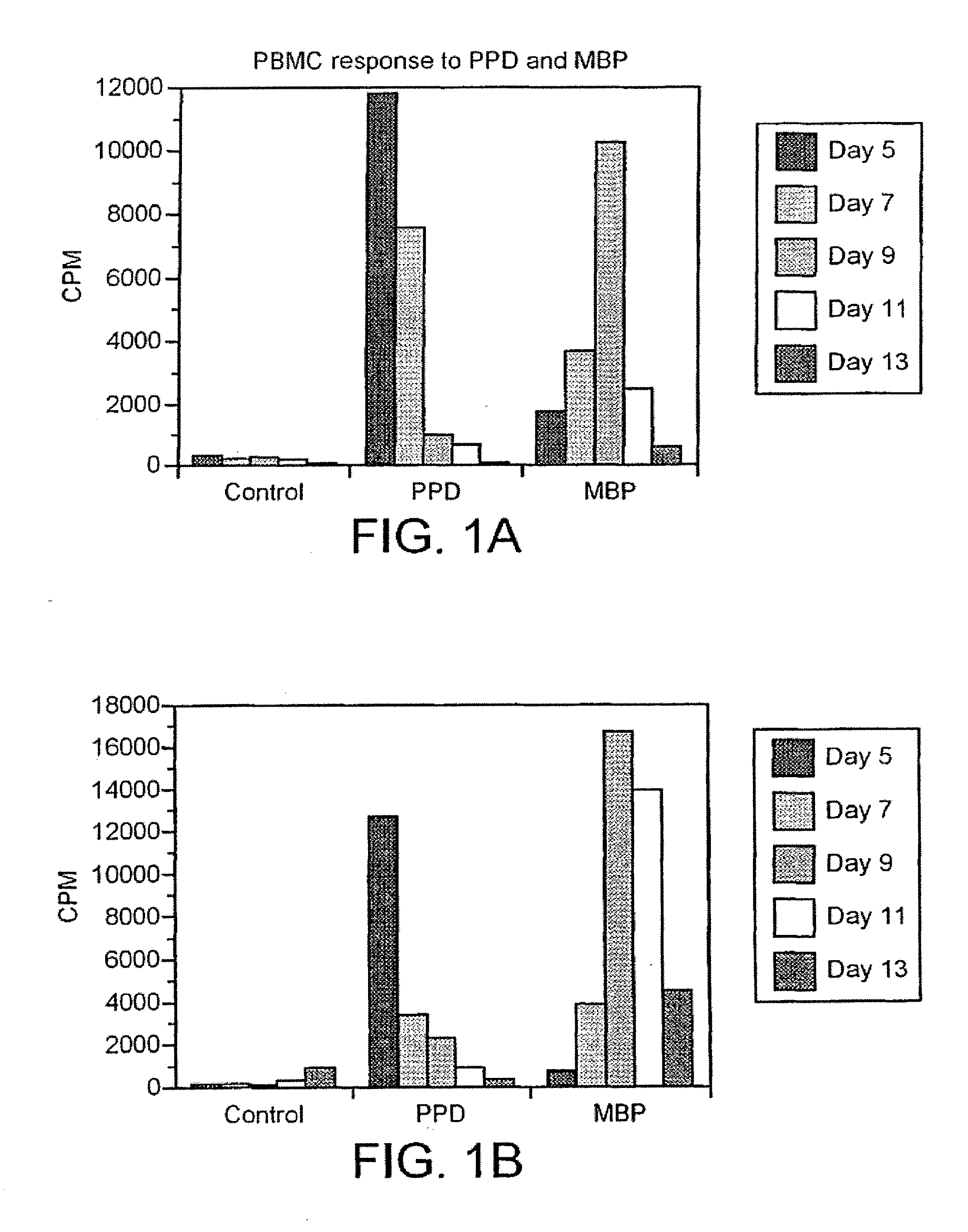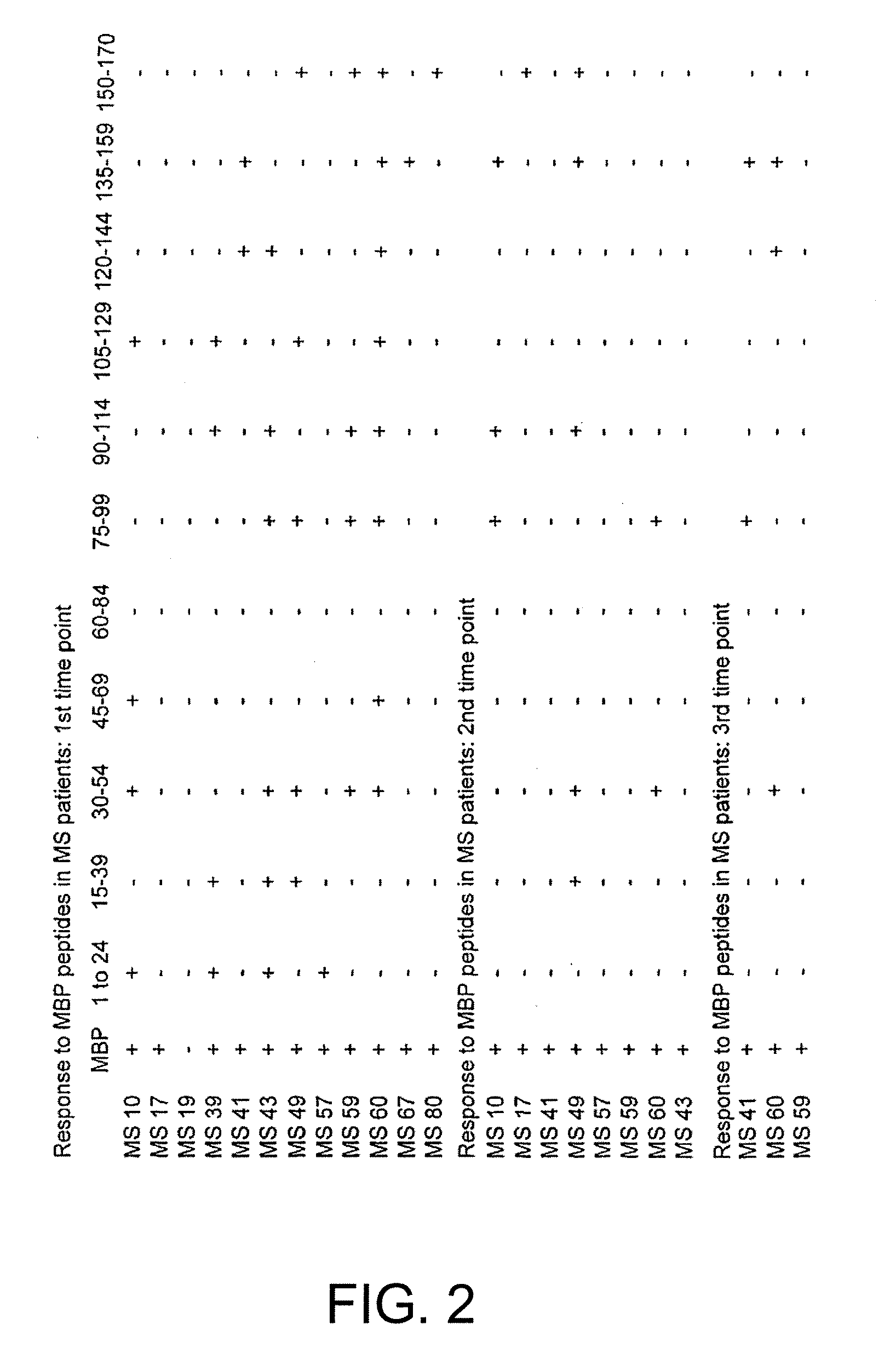Peptide composition
a technology of peptides and compositions, applied in the field of peptide compositions, can solve the problems of inducing tolerance of epitopes which require further processing
- Summary
- Abstract
- Description
- Claims
- Application Information
AI Technical Summary
Benefits of technology
Problems solved by technology
Method used
Image
Examples
example 1
Identification of T Cell Epitopes in MBP
Materials and Methods
Antigens
[0203]Human MBP is prepared from brain white matter as described by Deibler et al. (Deibler et al., 1972 Preparative Biochemistry 2:139), and its purity assessed by SDS-PAGE. MBP and Mycobacterium tuberculosis purified protein derivative (PPD) (UK Central Veterinary Laboratory, Surrey) are used in proliferative assays at previously determined optimal concentrations; the optimum concentration for each antigen is 50 μg / ml. A panel of 15-mer overlapping peptides spanning the whole MBP molecule are synthesized using standard F-moc chemistry on an Abimed AMS 422 multiple peptide synthesizer (Abimed, Langenfeld, Germany). Each peptide is displaced by 5 a.a. and overlapped by 10 a.a. We produce 33 peptides that are pooled into groups of 3 and pools are tested at the optimum concentration of 50 μg / ml, such that in vitro each peptide is present at a concentration of 16.6 μg / ml.
Patients and Control Subjects
[0204]The subjects...
example 2
Identification of APITOPEs in MBP
Materials and Methods
Antigen-Presentation Assay Using an APIPS
[0222]Presentation of the peptides to T cell clones is measured by proliferation. APC are fixed in 0.5% paraformaldehyde and plated at 1×105 cells per well of a 96-well tissue culture plate. T cells clones are plated at 2×104 cells per well in the presence of varying concentrations of peptide. After incubation for 48 h at 37° C., proliferation is measured by [3H] thymidine incorporation over 16-20 h. Results are compared with the ability of T cells to respond to the epitope presented by live APC.
[0223]Presentation of peptides to T cells isolated from DR2:MBP82-100 transgenic mouse was essentially as described above except APC were plated at 5×105 cells per well, T cells were plated at 1×105 cells per well, and incubation was allowed to proceed for 72 h prior to the addition of [3H]-thymidine.
Results
[0224]In this experiment, peptides which have been identified as epitopes in the previous ex...
example 2a
Investigation of MBP Peptides 30-44, 110-124, 130-144 and 156-170
[0225]In order to investigate whether various MBP peptides are APITOPEs, their capacity to be presented to T-cells by fixed APC is investigated. Live or pre-pulsed Mgar (HLA-DR2+ve) cells are pre-pulsed with the peptide in serum, or serum alone for 3.5 hours. Excess peptide is then removed from cells and the appropriate T cell clone added. The T cell proliferative response is measured by 3H-thymidine uptake. As shown in FIGS. 8 and 9, peptides 30-44 (FIG. 8A), 110-124 (FIG. 8B), and 130-144 (FIG. 9A) can be presented by fixed APC without further processing. These peptides are therefore defined as APITOPEs. Peptide 156-170, on the other hand, requires further processing for presentation to T cells (FIG. 9B). Fixed APC are unable to present this epitope to T cells, so 156-170 is not an APITOPE.
PUM
| Property | Measurement | Unit |
|---|---|---|
| Electrical conductance | aaaaa | aaaaa |
| Electrical conductance | aaaaa | aaaaa |
| Electrical conductance | aaaaa | aaaaa |
Abstract
Description
Claims
Application Information
 Login to View More
Login to View More - R&D
- Intellectual Property
- Life Sciences
- Materials
- Tech Scout
- Unparalleled Data Quality
- Higher Quality Content
- 60% Fewer Hallucinations
Browse by: Latest US Patents, China's latest patents, Technical Efficacy Thesaurus, Application Domain, Technology Topic, Popular Technical Reports.
© 2025 PatSnap. All rights reserved.Legal|Privacy policy|Modern Slavery Act Transparency Statement|Sitemap|About US| Contact US: help@patsnap.com



